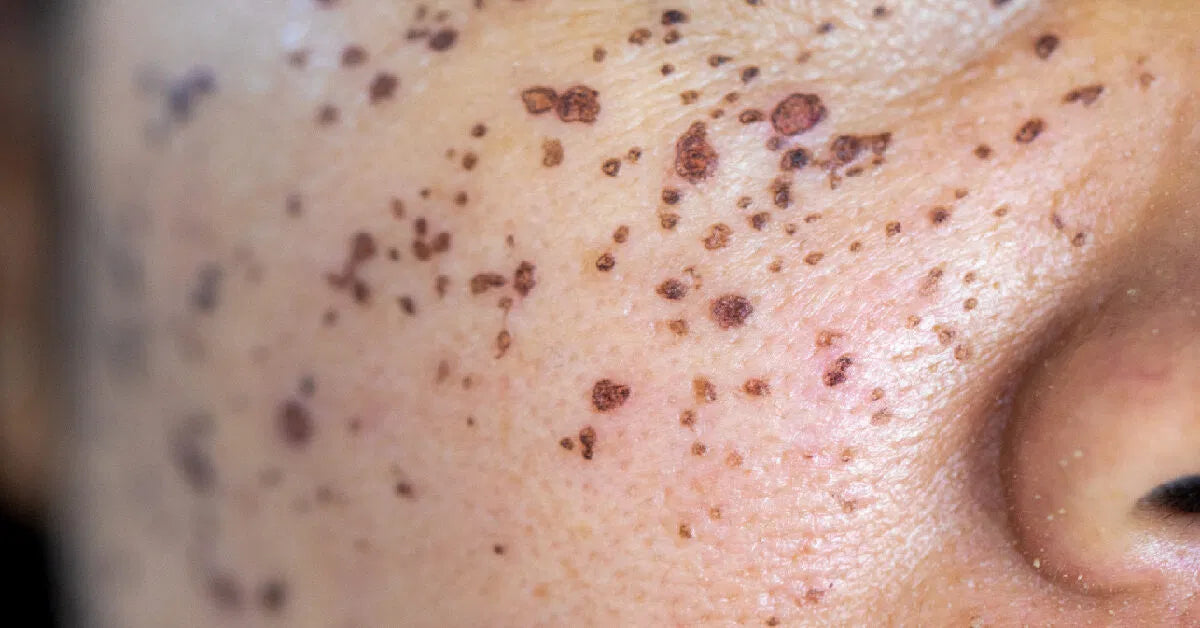
Scabs on the face can be both unsightly and uncomfortable. Whether they result from a healing pimple, an injury, or compulsive skin picking, it's essential to know how to properly treat and prevent scabs on your face. In this blog post, we'll explore effective methods to help you get rid of scabs on your face and promote faster healing.
Understanding Scabs on the Face
Before diving into treatment and prevention strategies, let's briefly understand what a scab is. A scab is a protective crust that forms over a wound or damaged skin. It's a natural part of the body's healing process, serving as a barrier against infection while new skin cells regenerate underneath.
Treatment of Face Scabs
Keep it Clean: The first step in treating face scabs is to ensure the area is clean. Gently cleanse the scab and the surrounding skin with a mild, fragrance-free cleanser and lukewarm water. Avoid using harsh or scented products, as they can irritate the scab.
"The first step in treating face scabs is to ensure the area is clean."
Avoid Picking: It's tempting to pick at scabs, but this can prolong the healing process and increase the risk of infection. Keep your hands off your face and resist the urge to pick or scratch the scab.
Moisturize: Applying a gentle, hypoallergenic moisturizer can help keep the scab hydrated and prevent it from becoming too dry and crusty. Look for products that are free of alcohol and fragrances.
Topical Antibiotics: If you notice signs of infection, such as redness, swelling, or discharge, consult a healthcare professional. They may recommend applying an antibiotic ointment to prevent or treat an infection.
Wound Healing Ointments: Over-the-counter wound healing ointments, like those containing petroleum jelly or zinc oxide, can help keep the scab moist and promote healing.
Avoid Sun Exposure: Protect the scab from direct sunlight, as UV rays can slow down the healing process and potentially lead to scarring. Use sunscreen or wear a wide-brimmed hat if you need to go outside.
Stay Hydrated: Drinking plenty of water can help keep your skin hydrated, which is essential for the healing process.
Healthy Diet: A balanced diet rich in vitamins and minerals can support skin health and healing. Consider foods with vitamin C, vitamin E, and zinc.

Prevention of Face Scabs
Don't Pick: The best way to prevent face scabs is to avoid picking or scratching your skin, especially acne or pimples. Picking can damage the skin and lead to scab formation.
Proper Acne Care: If you have acne-prone skin, establish a consistent skincare routine using products suitable for your skin type. This can help reduce the likelihood of acne-related scabs.
Gentle Exfoliation: Incorporate gentle exfoliation into your skincare routine to remove dead skin cells and prevent clogged pores, which can lead to scabs.
Avoid Harsh Products: Harsh skincare products, such as those containing alcohol or strong acids, can irritate the skin and lead to scabs. Choose mild and non-irritating products instead.
Manage Stress: Stress can exacerbate skin conditions and increase the likelihood of picking at your face. Practice stress-reduction techniques like mindfulness, meditation, or yoga.
Hygiene: Keep your face clean, but avoid overwashing, as excessive cleansing can strip your skin of natural oils and lead to dryness and scabbing.
Protective Measures: If you're prone to injuries or accidents that lead to facial wounds, take preventive measures such as wearing helmets, seat belts, and appropriate safety gear.
"UV rays can slow down the healing process and potentially lead to scarring."
Healing After the Scab Falls Off
Once the scab naturally falls off, you may notice that the skin underneath appears pink or discolored. This is normal and is a sign of the new skin forming. To help the healing process:
Continue Moisturizing: Apply a hypoallergenic moisturizer to the area to keep the new skin hydrated and promote a smooth texture.
Sun Protection: Protect the healing skin from the sun by applying sunscreen or covering it with clothing and a hat.
Time and Patience: Healing takes time, and the pinkness should gradually fade as the skin matures. Be patient and resist the urge to pick at any remaining imperfections.
When to Seek Medical Advice
While most scabs on the face heal on their own with proper care, there are instances when you should seek medical advice:If the scab shows signs of infection, such as increasing redness, swelling, or pus.
If the scab persists or returns despite your efforts to prevent it.
If you notice unusual changes in the scab, such as a foul odor, extreme pain, or unusual discoloration.
In such cases, consult a dermatologist or healthcare professional for a proper evaluation and treatment plan.
Scabs on the face can be a temporary but bothersome skin issue. By following proper treatment and prevention techniques, you can help speed up the healing process, prevent future scabs, and maintain healthy, clear skin. Remember that consistency and patience are key when it comes to effective skincare and scab management.
Comments (0)
Back to Botanic Affair Blog